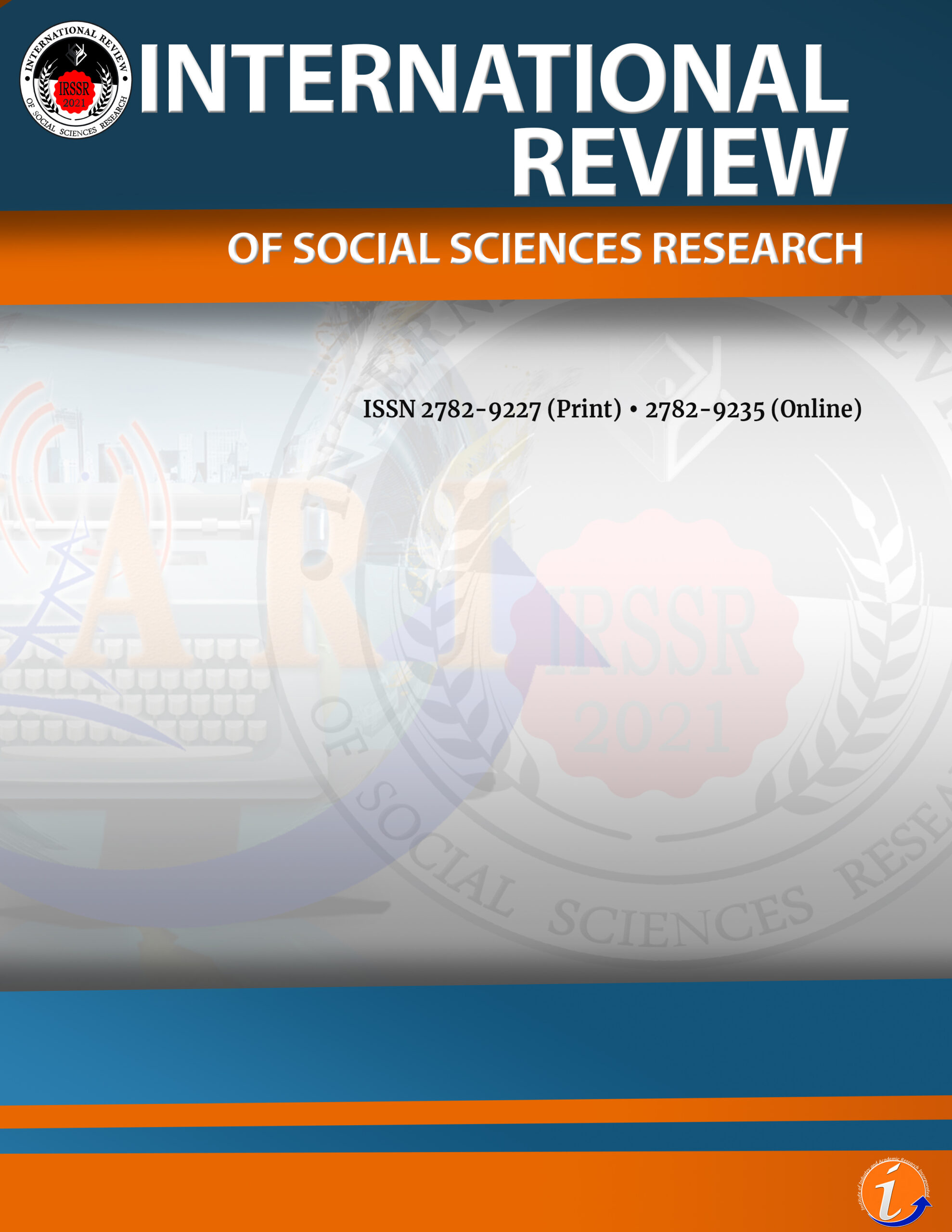This study examines the determinants of commuter satisfaction with public utility buses in Quezon City, Philippines, emphasizing service quality, travel duration, cost efficiency, and willingness to utilize the service. The study employed a quantitative research design, gathering data from public utility bus commuters in Quezon City using Slovin’s formula. A validated 29-question Likert-scale survey was utilized, and data were analyzed with linear and multiple regression. The survey results show the significant influence of these factors on commuter satisfaction and their willingness to use bus services in Quezon City. The quality-of-service variable, exhibits significant results, highlighting safety concerns which are particularly relevant among women. This reflect subjective norms, travel duration and cost-efficiency were found to have a significant positive impact, as passengers value the advantages of time-saving and affordable prices. This research calls for regulatory changes aimed at improving service quality and safety to enhance operational standards of bus services in the Philippines.
bus transit, transportation, PCA, commuter satisfaction, Quezon City
Lorenzo Miguel C. Galvez. Corresponding author. Student, University of Santo Tomas – Manila. Email: lorenzogalvez783@gmail.com
Paulene Kaye R. Katon. Student, University of Santo Tomas – Manila.
Karen Grace P. Valdez. PhD. Associate Professor, University of Santo Tomas – Manila.
“All authors equally contributed to the conception, design, preparation, data gathering and analysis, and writing of the manuscript. All authors read and approved the final manuscript.”
No potential conflict of interest was reported by the author(s).
This work was not supported by any funding.
This study was conducted in accordance with the ethical guidelines set by the Philippine Social Science Council - Social Science Ethics Review Board (PSSC-SSERB). The conduct of this study has been approved and given clearance(s) by the Philippine Social Science Council - Social Science Ethics Review Board (PSSC-SSERB).
The author declares the use of Artificial Intelligence (AI) in writing this paper. In particular, the author used QuillBot to ensure the proper and cohesive structure of paragraphs, summarizing, paraphrasing, and organizing the reference list. The author takes full responsibility in ensuring proper review and editing of contents generated using AI.
Abdallah, T. (2023). Sustainable mass transit: Challenges and opportunities in urban public transportation. Elsevier.
Aithal, A., & Aithal, P. S. (2020). Development and validation of survey questionnaire & experimental data – A systematical review-based statistical approach. Social Science Research Network. https://doi.org/10.2139/ssrn.3724105
Alabi, B. N. T., Saeed, T. U., Amekudzi-Kennedy, A., Keller, J. D., & Labi, S. (2021). Evaluation criteria to support cleaner construction and repair of airport runways: A review of the state of practice and recommendations for future practice. Journal of Cleaner Production, 312, 127776. https://doi.org/10.1016/j.jclepro.2021.127776
Anderson, R., Condry, B., Findlay, N., Brage-Ardao, R., & Li, H. (2013). Measuring and valuing convenience and service quality: A review of global practices and challenges from mass transit operators and railway industries. International Transport Forum Discussion Papers. https://doi.org/10.1787/2223439X
Arlen, C. (2023, April 11). The 5 service dimensions all customers care about. Service Performance.
Au, A. K. M., & Tse, A. C. B. (2019). Expectancy disconfirmation. Asia Pacific Journal of Marketing and Logistics, 31(1), 291–300. https://doi.org/10.1108/APJML-06-2018-0219
Bacero, R., Del Rosario, A., Roxas, N., & Fillone, A. (2018). Mode choice analysis of commuters in Intramuros, Manila. 25th Annual Transportation Science Society of the Philippines Conference.
Balita, C. (2023). Duration of daily commute in the Philippines as of June 2023. Statista. Retrieved April 28, 2024,
Batarce, M., Muñoz, J. C., & De Dios Ortúzar, J. (2016). Valuing crowding in public transport: Implications for cost-benefit analysis. Transportation Research Part A: Policy and Practice, 91, 358–378. https://doi.org/10.1016/j.tra.2016.06.025
Bilişik, Ö. N., Erdoğan, M., Kaya, İ., & Baraçlı, H. (2013). A hybrid fuzzy methodology to evaluate customer satisfaction in a public transportation system for Istanbul. Total Quality Management & Business Excellence, 24(9-10), 1141–1159. https://doi.org/10.1080/14783363.2013.809942
Boquet, Y. (2017). Bus transport in the Philippines. In The Philippine Archipelago (pp. 493–496). Springer Geography. https://doi.org/10.1007/978-3-319-51926-5_15
Boquet, Y. (2019). BRT in the Philippines: A solution to Manila and Cebu traffic problems? IOP Conference Series: Earth and Environmental Science, 338(1), 012005. https://doi.org/10.1088/1755-1315/338/1/012005
Bucu, E. G. C., Araos, X. K., Balbin, R. E., Dequito, A. P., & Pineda, M. J. (2023). A SERVQUAL approach to improving the railway experience amidst pandemic using multi-criteria decision making. In 13th Annual International Conference on Industrial Engineering and Operations Management. https://doi.org/10.46254/AN13.20230504
Cahigas, M. M. L., Prasetyo, Y. T., Persada, S. F., Ong, A. K. S., & Nadlifatin, R. (2022). Understanding the perceived behavior of public utility bus passengers during the era of COVID-19 pandemic in the Philippines: Application of social exchange theory and theory of planned behavior. Research in Transportation Business & Management, 45, 100840. https://doi.org/10.1016/j.rtbm.2022.100840
Chakrabarti, S. (2017). How can public transit get people out of their cars? An analysis of transit mode choice for commute trips in Los Angeles. Transport Policy, 54, 80–89. https://doi.org/10.1016/j.tranpol.2016.11.005
Cheng, Y.-H., & Chen, S.-Y. (2015). Perceived accessibility, mobility, and connectivity of public transportation systems. Transportation Research Part A: Policy and Practice, 77, 386–403. https://doi.org/10.1016/j.tra.2015.05.003
Chowdhury, S., Ceder, A., & Schwalger, B. (2015). The effects of travel time and cost savings on commuters’ decision to travel on public transport routes involving transfers. Journal of Transport Geography, 43, 151–159. https://doi.org/10.1016/j.jtrangeo.2015.01.009
Chung, Y. S., & Chiang, Y. C. (2024). Characterizing spatiotemporal patterns of bus bunching frequency on a bus route network: A case study of Taipei city. Asian Transport Studies, 10, 100139. https://doi.org/10.1016/j.eastsj.2024.100139
Cook, J., Kimuyu, P., Blum, A., & Gatua, J. G. (2016). A simple stated preference tool for estimating the value of travel time in rural Africa. Journal of Benefit-Cost Analysis, 7(2), 221–247. https://doi.org/10.1017/bca.2016.13
Curl, A., Nelson, J. D., & Anable, J. (2015). Same question, different answer: A comparison of GIS-based journey time accessibility with self-reported measures from the National Travel Survey in England. Computers, Environment and Urban Systems, 49, 86–97. https://doi.org/10.1016/j.compenvurbsys.2013.10.006
Del Chiappa, G., Martín, J. C., & Román, C. (2016). Service quality of airports’ food and beverage retailers: A fuzzy approach. Journal of Air Transport Management, 53, 105–113. https://doi.org/10.1016/j.jairtraman.2016.02.002
Diener, E., Biswas-Diener, R., & Lyubchik, N. (2018). Social well-being: Research and policy recommendations. Global Happiness.
Donald, I., Cooper, S. R., & Conchie, S. M. (2014). An extended theory of planned behaviour model of the psychological factors affecting commuters’ transport mode use. Journal of Environmental Psychology, 40, 39–48. https://doi.org/10.1016/j.jenvp.2014.03.003
Mann, P. W. (2018). Dimensions of service quality – Services marketing. Inflibnet eBooks.
Durand, A., Harms, L., Hoogendoorn-Lanser, S., & Zijlstra, T. (2018). Mobility-as-a-service and changes in travel preferences and travel behaviour: A literature review. ResearchGate. https://doi.org/10.13140/RG.2.2.32813.33760
Erman, T., & Kara, H. (2018). Female domestic workers strategizing via commuting long distance: New challenges and negotiations in neoliberalizing Turkey. Women’s Studies International Forum, 67, 45–52. https://doi.org/10.1016/j.wsif.2018.01.002
Evangelista, C., Bonifacio, S., Gonzales, R., Villanueva, G., Principe, R., Juliano, T., & Tus, J. (2021). Public commuters’ job burnout and job satisfaction during the COVID-19 pandemic in the Philippines. International Journal of Advance Research and Innovative Ideas in Education, 1(1), 1–10. https://doi.org/10.6084/m9.figshare.14810586.v1
Facchini, E., & Dias, E. M. (2019). The importance of development of control processes and methods for urban bus services. ADCAIJ: Advances in Distributed Computing and Artificial Intelligence Journal, 8(3), 51–65. https://doi.org/10.14201/ADCAIJ2019835165
Fallaria, A. J., De Jesús, R., Carpio, M., Jacinto, F. L., De León, L., Agapito, J., & Ramos, J. G. (2019). Emerging from the ‘worst’: An ethnography of the modern Filipino commuting culture behind the Metro Manila traffic crisis. MATEC Web of Conferences, 272, 01032. https://doi.org/10.1051/matecconf/201927201032
Friman, M., Gärling, T., Ettema, D., & Olsson, L. E. (2017). How does travel affect emotional well-being and life satisfaction? Transportation Research Part A: Policy and Practice, 106, 170–180. https://doi.org/10.1016/j.tra.2017.09.024
Gatarin, G. R. (2023). Beating the traffic: Civil society participation in transport reforms and innovations in Metro Manila, Philippines. In Advances in 21st Century Human Settlements (pp. 143–158). Springer. https://doi.org/10.1007/978-981-19-8726-7_9
Giménez-Nadal, J. I., & Molina, J. A. (2019). Daily feelings of US workers and commuting time. Journal of Transport & Health, 12, 21–33. https://doi.org/10.1016/j.jth.2018.11.001
Guevara, R. (2024, February 14). The public transport system dilemma of the Philippines. M2.0 Communications Inc.
Gülhan, G., Ceylan, H., & Öztürk, M. C. H. (2013). Impact of utility-based accessibility measures on urban public transportation planning: A case study of Denizli, Turkey. Cities, 32, 102–112. https://doi.org/10.1016/j.cities.2013.04.001
Gundersen, F., Langeland, O., & Aarhaug, J. (2017). Workplace location, transport, and urban competitiveness: The Oslo case. Transportation Research Procedia, 26, 196–206. https://doi.org/10.1016/j.trpro.2017.07.020
Gutiérrez, M., Hurtubia, R., & De Dios Ortúzar, J. (2020). The role of habit and the built environment in the willingness to commute by bicycle. Travel Behaviour and Society, 20, 62–73. https://doi.org/10.1016/j.tbs.2020.02.007
Grujičić, D., Ivanović, I., Jović, J. J., & Djorić, V. (2014). Customer perception of service quality in public transport. Transport, 29(3), 285–295. https://doi.org/10.3846/16484142.2014.951685
Ha, J., Lee, S., & Ko, J. (2020). Unraveling the impact of travel time, cost, and transit burdens on commute mode choice for different income and age groups. Transportation Research Part A: Policy and Practice, 141, 147–166. https://doi.org/10.1016/j.tra.2020.07.020
Hasselwander, M., Bigotte, J. F., Antunes, A. P., & Sigua, R. G. (2022). Towards sustainable transport in developing countries: Preliminary findings on the demand for mobility-as-a-service (MaaS) in Metro Manila. Transportation Research Part A: Policy and Practice, 155, 501–518. https://doi.org/10.1016/j.tra.2021.11.024
He, H., Ponce-López, R., Trinh, L. T. D., Ferreira, J., & Zegras, P. C. (2019). Representing accessibility in property valuations and willingness-to-pay. Transportation Research Procedia, 41, 617–620. https://doi.org/10.1016/j.trpro.2019.09.110
Heinen, E. (2016). Identity and travel behaviour: A cross-sectional study on commute mode choice and intention to change. Transportation Research Part F: Traffic Psychology and Behaviour, 43, 238–253. https://doi.org/10.1016/j.trf.2016.10.016
Hornsby, A. N., & Love, B. C. (2020). How decisions and the desire for coherency shape subjective preferences over time. Cognition, 200, 104244. https://doi.org/10.1016/j.cognition.2020.104244
Hussain, B., Maghrour Zefreh, M., & Torok, A. (2018). Designing the appropriate data collection method for public transport passenger satisfaction analysis. International Journal for Traffic and Transport Engineering, 8(2), 10.7708/ijtte.2018.8(2).03. http://dx.doi.org/10.7708/ijtte.2018.8(2).03
Ingaldi, M. (2018). Overview of the main methods of service quality analysis. Production Engineering Archives, 18(18), 54–59. https://doi.org/10.30657/pea.2018.18.10
Ingvardson, J. B., & Nielsen, O. A. (2017). Effects of new bus and rail rapid transit systems – An international review. Transport Reviews, 1–21. https://doi.org/10.1080/01441647.2017.1301594
International Fund for Agricultural Development. (2016). Investing in rural people in the Philippines. IFAD.
Jou, Y., Saflor, C. S., Mariñas, K. A., & Young, M. N. (2023). Determining factors affecting perceived customer satisfaction on public utility bus system in Occidental Mindoro, Philippines: A case study on service quality assessment during major disruptions. Sustainability, 15(4), 2996. https://doi.org/10.3390/su15042996
Khanal, M., Khadka, S. R., Subedi, H., Chaulagain, I. P., Regmi, L. N., & Bhandari, M. (2023). Explaining the factors affecting customer satisfaction at the fintech firm F1 Soft by using PCA and XAI. FinTech, 2(1), 70–84. https://doi.org/10.3390/fintech2010006
Lee, D., Yun, J., Lee, N., & Hong, Y. C. (2024). Association between commuting time and depressive symptoms in the 5th Korean Working Conditions Survey. Journal of Transport & Health, 34, 101731. https://doi.org/10.1016/j.jth.2023.101731
Liobikienė, G., & Poškus, M. S. (2019). The importance of environmental knowledge for private and public sphere pro-environmental behavior: Modifying the Value-Belief-Norm theory. Sustainability, 11(12), 3324. https://doi.org/10.3390/su11123324
Litman, T. (2015). Evaluating public transportation health benefits. Victoria Transport Policy Institute for the American Public Transportation Association.
Lunke, E. B., Fearnley, N., & Aarhaug, J. (2021). Public transport competitiveness vs. the car: Impact of relative journey time and service attributes. Research in Transportation Economics, 90, 101098. https://doi.org/10.1016/j.retrec.2021.101098
Luz, S. G. D., Morano, S. K. D., & Santos, A. M. (2015). Sociological picture and analysis on Filipino transport systems. Urbanism, Migration and Mega Traffic, 42(10), 4–9.
Ma, L., & Ye, R. (2019). Does daily commuting behavior matter to employee productivity? Journal of Transport Geography, 76, 130–141. https://doi.org/10.1016/j.jtrangeo.2019.03.008
Mapa, D. (2021, July 23). Population and housing. Philippine Statistics Authority.
Macusi, O. C. D. (2014). The resources and challenges of a city: The case of Quezon City, Philippines. ResearchGate.
Mayo, F. L., & Taboada, E. B. (2020). Ranking factors affecting public transport mode choice of commuters in an urban city of a developing country using analytic hierarchy process: The case of Metro Cebu, Philippines. Transportation Research Interdisciplinary Perspectives, 4, 100078. https://doi.org/10.1016/j.trip.2019.100078
McLeod, S., Scheurer, J., & Curtis, C. (2017). Urban public transport: Planning principles and emerging practice. Journal of Planning Literature, 32(3), 223–239. https://doi.org/10.1177/0885412217693570
Michelsen, G., & Fischer, D. (2017). Sustainability and education. In Sustainable development policy (pp. 135–158). Routledge. https://doi.org/10.4324/9781315269177
Mijares, A., Suzuki, M., & Yai, T. (2016). Passenger satisfaction and mental adaptation under adverse conditions: Case study in Manila. Journal of Public Transportation, 19(4), 144–160. https://doi.org/10.5038/2375-0901.19.4.9
Miller, P., De Barros, A. G., Kattan, L., & Wirasinghe, S. C. (2016). Public transportation and sustainability: A review. KSCE Journal of Civil Engineering, 20(3), 1076–1083. https://doi.org/10.1007/s12205-016-0705-0
Miller, P. (2014). Sustainability and public transportation: Theory and analysis (Doctoral thesis, University of Calgary, Calgary, Canada). University of Calgary PRISM Repository. https://doi.org/10.11575/PRISM/27943
Monzon, A. (2024, March 22). MAP: Metro traffic so bad it calls for ‘state of calamity.’ INQUIRER.net.
Mittal, S., Dai, H., & Shukla, P. (2016). Low carbon urban transport scenarios for China and India: A comparative assessment. Transportation Research Part D: Transport and Environment, 44, 266–276. https://doi.org/10.1016/j.trd.2015.04.002
Napalang, M. S. G., & Regidor, J. R. F. (2015). Challenges of urban transport development in Metro Manila: A look back at the last 40 years. In Proceedings of the Eastern Asia Society for Transportation Studies (Vol. 10). https://easts.info/on-line/proceedings/vol10/pdf/1296.pdf
Narboneta, C., & Teknomo, K. M. (2014). Implementation of multimodal public transportation route planner for Metro Manila. In 22nd Annual Conference of the Transportation Science Society of the Philippines.
O’Donovan, B., Rust, C., & Price, M. (2015). A scholarly approach to solving the feedback dilemma in practice. Assessment & Evaluation in Higher Education. https://doi.org/10.1080/02602938.2015.1052774
Otto, A. R., & Daw, N. D. (2019). The opportunity cost of time modulates cognitive effort. Neuropsychologia, 123, 92–105. https://doi.org/10.1016/j.neuropsychologia.2018.05.006
Park, K., Farb, A., & Chen, S. (2021). First-/last-mile experience matters: The influence of the built environment on satisfaction and loyalty among public transit riders. Transport Policy, 112, 32–42. https://doi.org/10.1016/j.tranpol.2021.08.003
Peña, K. D. (2022, June 16). Suffering commuters, higher fare, fewer trips: PH transport woes pile up. INQUIRER.net. https://newsinfo.inquirer.net/1611391/suffering-commuters-higher-fare-fewer-trips-ph-transport-woes-pile-up
Perrotta, A. F. (2016). Transit fare affordability: Findings from a qualitative study. Public Works Management & Policy, 22(3), 226–252. https://doi.org/10.1177/1087724X16650201
Poliak, M., Poliaková, A., Mrníková, M., Šimurková, P., Jaśkiewicz, M., & Jurecki, R. (2017). The competitiveness of public transport. Journal of Competitiveness, 9(3), 81–97. https://doi.org/10.7441/joc.2017.03.06
Polydoropoulou, A., Tsouros, I., Pagoni, I., & Tsirimpa, A. (2020). Exploring individual preferences and willingness to pay for mobility as a service. Transportation Research Record, 2674(11), 152–164. https://doi.org/10.1177/0361198120938054
Poudel, N., & Singleton, P. A. (2024). Willingness to pay for changes in travel time and work time: A stated choice experiment of US commuters. Research in Transportation Economics, 103, 101381. https://doi.org/10.1016/j.retrec.2023.101381
Qamhaieh, A., & Chakravarty, S. (2016). Global cities, public transportation, and social exclusion: A study of the bus system in Abu Dhabi. Mobilities, 12(3), 462–478. https://doi.org/10.1080/17450101.2016.1139805
Quezon City population 2024. (n.d.). World Population Review.
Ranosa, L., Villaraza, C. M., Fillone, A., Guillen, M. D., & Biona, J. B. (2017). Providers’ and users’ assessment of public transport and facilities: Baguio City, Philippines. In Proceedings of the Eastern Asia Society for Transportation Studies (Vol. 11).
Redding, S. J., & Turner, M. A. (2015). Transportation costs and the spatial organization of economic activity. Handbook of Regional and Urban Economics, 1339–1398. https://doi.org/10.1016/b978-0-444-59531-7.00020-x
Regidor, J. R. (2013). Traffic congestion in Metro Manila: Is the UVVRP still effective? Philippine Engineering Journal, 34(1), 66-75.
Regidor, J. R. F., & Aloc, D. S. (2017). Railway transport planning and implementation in metropolitan Manila, 1879 to 2014. Journal of the Eastern Asia Society for Transportation Studies, 12, 198–215. https://doi.org/10.11175/easts.12.198
Rith, M., Doi, K., Gue, I. H. V., Fillone, A. M., Soliman, J., Mayol, A. P., Lopez, N. S., Ubando, A. T., & Biona, J. B. M. (2018). Understanding of determinants of household vehicle ownership level toward urban sustainable transportation in Southeast Asia: A case study in Metro Manila. Institute of Electrical and Electronics Engineers (IEEE). https://doi.org/10.1109/hnicem.2018.8666265
Rith, M., Fillone, A. M., & Biona, J. B. M. (2019). Development and application of a travel mode choice model and policy implications for home-to-work commuters toward reduction of car trips in Metro Manila. Asian Transport Studies, 5(5), 862–873. https://doi.org/10.11175/eastsats.5.862
Rith, M., Fillone, A., & Biona, J. B. M. (2019). The impact of socioeconomic characteristics and land use patterns on household vehicle ownership and energy consumption in an urban area with insufficient public transport service: A case study of Metro Manila. Journal of Transport Geography, 79, 102484. https://doi.org/10.1016/j.jtrangeo.2019.102484
Rivera, K. (2018, May 4). The Filipino commuters’ crisis. INQUIRER.net. https://opinion.inquirer.net/112930/filipino-commuters-crisis
Roquel, K. I. D., Abad, R. P., & Fillone, A. (2021). Proximity indexing of public transport terminals in Metro Manila. Sustainability, 13(8), 4216. https://doi.org/10.3390/su13084216
Rotaris, L., & Danielis, R. (2015). Commuting to college: The effectiveness and social efficiency of transportation demand management policies. Transport Policy, 44, 158–168. https://doi.org/10.1016/j.tranpol.2015.08.001
Sam, E. F., Hamidu, O., & Daniels, S. (2018). SERVQUAL analysis of public bus transport services in Kumasi metropolis, Ghana: Core user perspectives. Case Studies on Transport Policy, 6(1), 25–31. https://doi.org/10.1016/j.cstp.2017.12.004
Schwartz, B. (2004). The paradox of choice: Why more is less. Harper Perennial.
Shaw, W. D. (1992). Searching for the opportunity cost of an individual’s time. Land Economics, 68(1), 107. https://doi.org/10.2307/3146747
Suhr, D. D. (2023). Principal components analysis or exploratory factor analysis. Columbia University Mailman School of Public Health.
Balita, C. (2024, February 29). Popular modes of transportation in the Philippines 2023. Statista.
Subingsubing, K. (2020, January 31). Metro commuters lost 257 hours to traffic last year. INQUIRER.net.
Sukor, R., Mohd Ayub, A. F., Norhasnida, Z., & Nor Khaizura, A. R. (2017). Influence of students’ motivation on academic performance among non-food science students taking a food science course. International Journal of Academic Research in Progressive Education and Development, 6(4), 104–112. https://doi.org/10.6007/IJARPED/v6-i4/3528
Suleman, D. (2014, January 1). Service quality and customer satisfaction of public transport on Cape Coast-Accra route, Ghana. Developing Country Studies, 4(18), 142-149.
Sumaedi, S., Bakti, I. G. M. Y., Rakhmawati, T., Astrini, N. J., Widianti, T., & Yarmen, M. (2016). Factors influencing public transport passengers’ satisfaction: A new model. Management of Environmental Quality: An International Journal, 27(5), 585–597. https://doi.org/10.1108/MEQ-05-2015-0084
Thompson, C. (2023, November 8). Cost effectiveness vs. cost efficiency: What’s the difference? Precursive.
Trang, N. M. (2022). The influence of personal characteristics on customers’ perception of e-banking service quality and cost effectiveness in Vietnam. Open Journal of Social Sciences, 10, 377–391. https://doi.org/10.4236/jss.2022.101029
Tuấn, V. A., Trường, N. V., Shimizu, T., & An, N. N. (2022). Public transport service quality: Policy prioritization strategy in the importance-performance analysis and the three-factor theory frameworks. Transportation Research Part A: Policy and Practice, 166, 118–134. https://doi.org/10.1016/j.tra.2022.10.006
Uddin, R., Mandic, S., & Khan, A. (2019). Active commuting to and from school among 106,605 adolescents in 27 Asia-Pacific countries. Journal of Transport & Health, 15, 100637. https://doi.org/10.1016/j.jth.2019.100637
Valdez, K. G. P., & Agustin, N. A. J. (2020). Urban quality of life: Instrument reliability and validity. Millennium Journal of Humanities and Social Sciences. https://doi.org/10.47340/mjhss.v1i3.3.2020
Van, H. T., Choocharukul, K., & Fujii, S. (2014). The effect of attitudes toward cars and public transportation on behavioral intention in commuting mode choice: A comparison across six Asian countries. Transportation Research Part A: Policy and Practice, 69, 36–44. https://doi.org/10.1016/j.tra.2014.08.008
Van Lierop, D., Badami, M. G., & El-Geneidy, A. M. (2018). What influences satisfaction and loyalty in public transport? A review of the literature. Transport Reviews, 38(1), 52–72. https://doi.org/10.1080/01441647.2017.1298683
Kovvali, V., & Ganji, S. (2019). Strategic thinking for urban bus transport in India. Transportation Research Procedia, 41, 55–60. https://doi.org/10.1016/j.trpro.2019.09.011
Villaraza, C. M., Mella-Lira, B., Fillone, A., Hickman, R., & Biona, J. B. M. (2017). Social equity in urban transport: The case of Metro Manila, Philippines. In Proceedings of the 24th Annual Conference of the Transportation Science Society of the Philippines.
Weeks, B. O. (2004). The paradox of choice: Why more is less (Review of the book The paradox of choice: Why more is less, by B. Schwartz). Academy of Management Perspectives, 18(4), 170–171. https://doi.org/10.5465/ame.2004.15268798
Yu, H. S., Zhang, J. J., Kim, D. H., Chen, K. C., Henderson, C., Min, S. D., & Huang, H. (2014). Service quality, perceived value, customer satisfaction, and behavioral intention among fitness center members aged 60 years and over. Social Behavior and Personality, 42(5), 757–767. https://doi.org/10.2224/sbp.2014.42.5.757
Zhang, J., Chen, W., Petrovsky, N., & Walker, R. M. (2021). The expectancy‐disconfirmation model and citizen satisfaction with public services: A meta‐analysis and an agenda for best practice. Public Administration Review, 82(1), 147–159. https://doi.org/10.1111/puar.13368
Cite this article:
Galvez, L.M.C., Katon, P.K.R. & Valdez, K.G.P. (2025). Exploring the factors influencing commuters' satisfaction and the use of public utility buses in Quezon City, Philippines. International Review of Social Sciences Research, 5(1), 73-105. https://doi.org/10.53378/irssr.353147
License:
![]()
This work is licensed under a Creative Commons Attribution (CC BY 4.0) International License.










